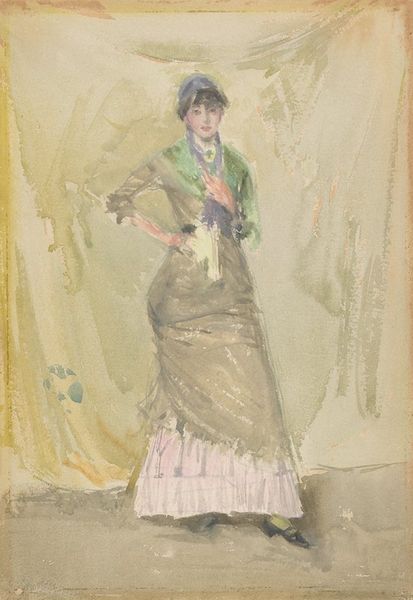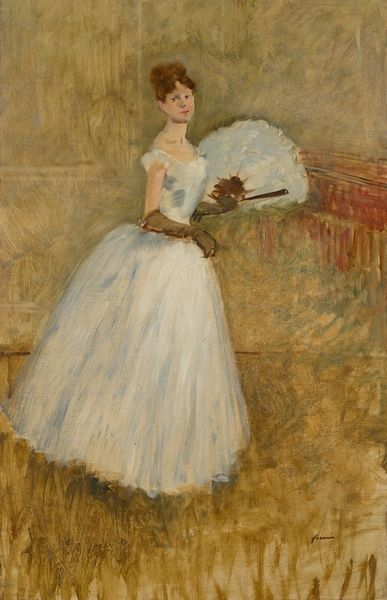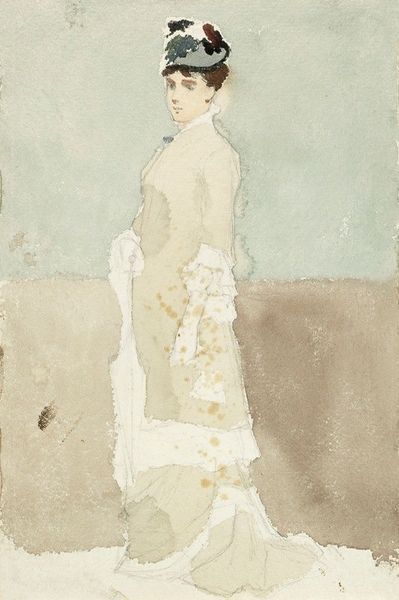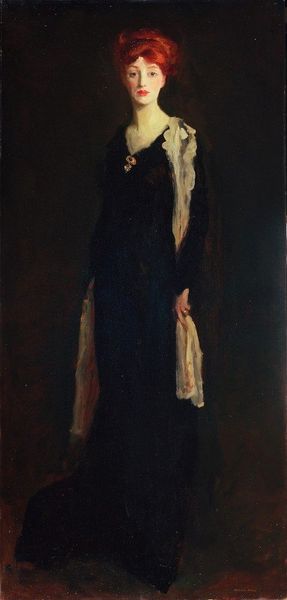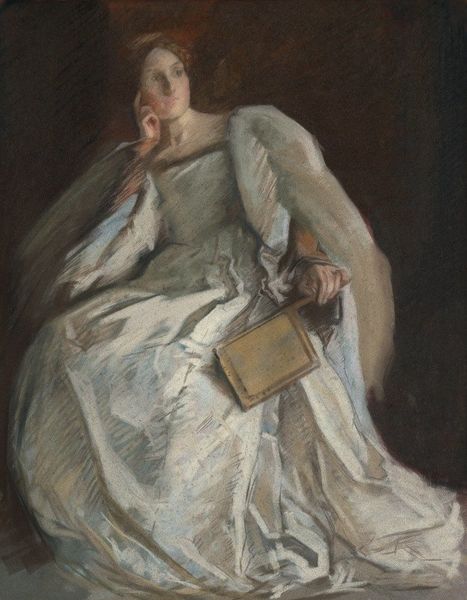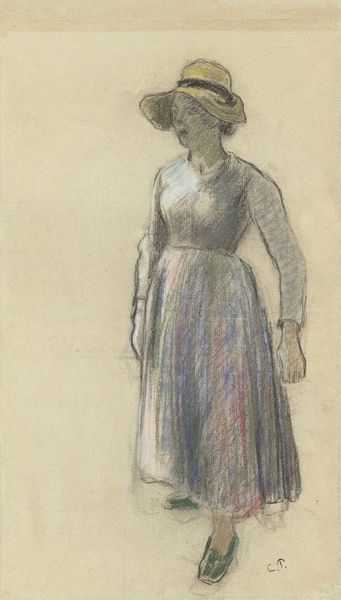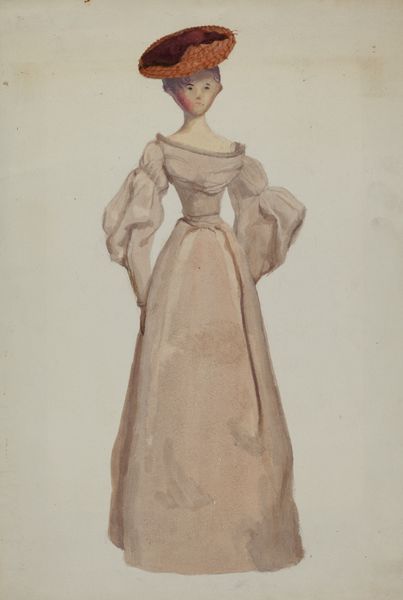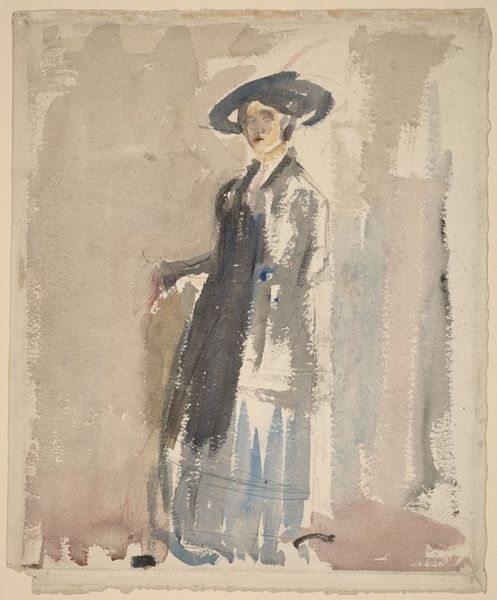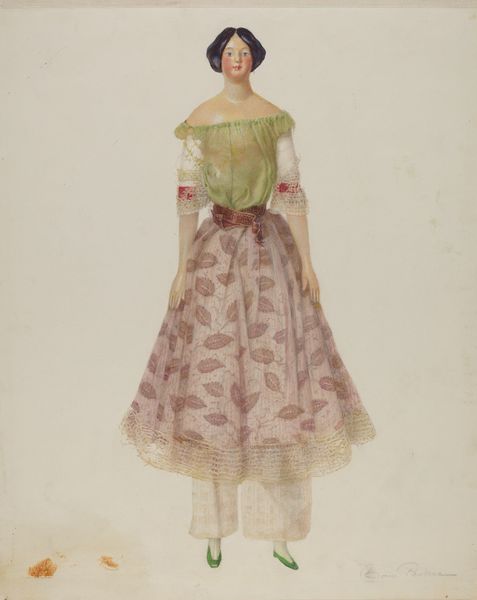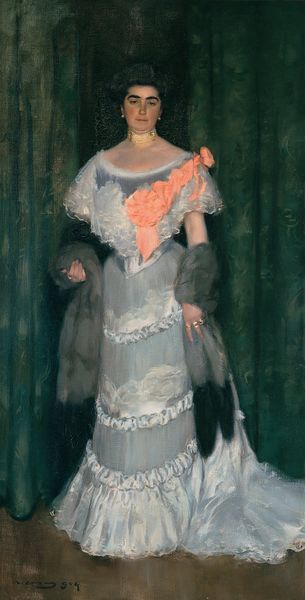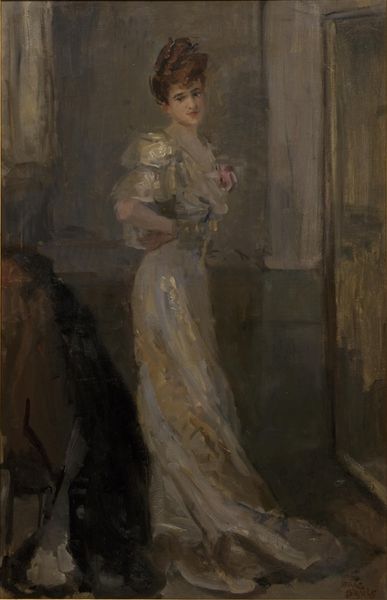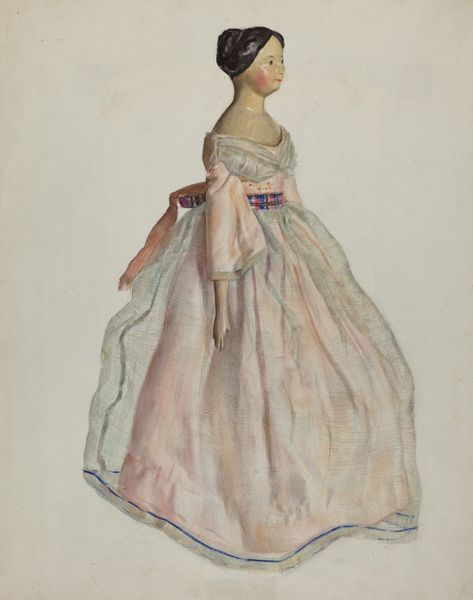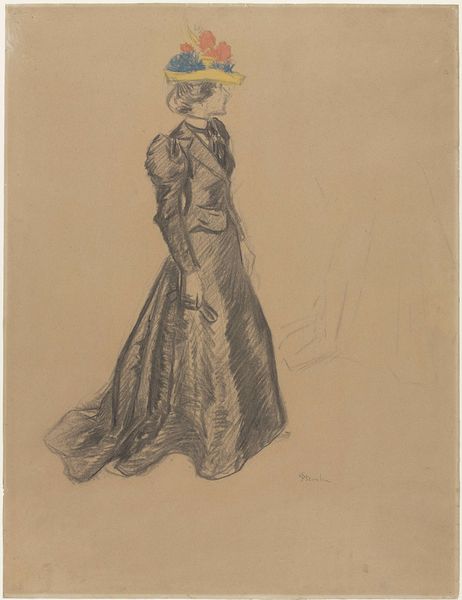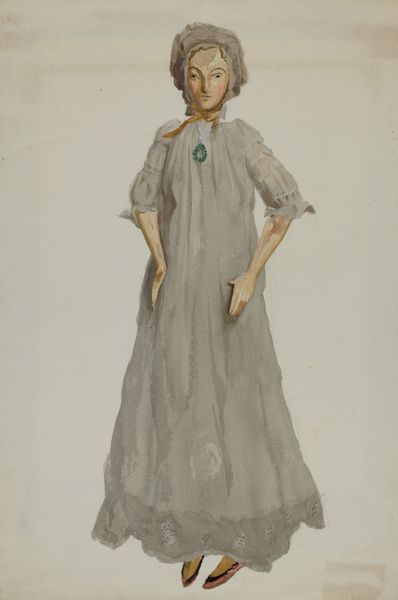
painting, watercolor
#
portrait
#
painting
#
impressionism
#
watercolor
#
post-impressionism
#
realism
Copyright: Public Domain: Artvee
Editor: Here we have James Abbott McNeill Whistler’s watercolor, "Harmony in Violet and Amber," created around 1883-1884. The first thing that strikes me is its muted palette and the flowing quality of the washes. What compositional elements stand out to you in this work? Curator: The most compelling aspect is indeed the arrangement of colour and form. The composition relies on subtle tonal modulations. Notice how the violet of the curtain bleeds into the amber of the dress. The limited colour palette directs attention to the surface itself. The figure’s form is subordinate to this broader exploration. Editor: It's interesting you say that. It felt very portrait-focused to me, with the woman as the clear subject of the piece, especially with the slightly averted gaze. Do you think that gaze might carry some meaning or influence our viewing? Curator: It may seem counter-intuitive, but Whistler likely viewed the figure primarily as a formal element within a larger, carefully orchestrated composition. Her gaze is soft, undirected. It doesn't actively engage the viewer but, rather, integrates her into the abstract play of colour. Are we to look beyond the aesthetic arrangement, or do we see it as an exercise in compositional balance and harmony, hence the title itself? Editor: That is a fascinating viewpoint to consider, shifting focus away from interpretation and more to the visual balance between colors and shapes. I suppose I often assume there's a story *behind* the portrait itself. Curator: Quite right! The semiotic structure of narrative is easily superimposed onto portraiture, but here, narrative feels deliberately suppressed in favour of formal relationships. Whistler offers a painting *about* painting, rather than a painting *about* a woman. Editor: This close formal analysis has really reshaped my understanding of Whistler's approach. I’m not sure I'll ever see portraiture quite the same way again! Curator: Indeed. Close-reading for structural elements often reveal artistic intent obscured by convention.
Comments
No comments
Be the first to comment and join the conversation on the ultimate creative platform.
